Students Take Shelter: Irma Evacuates FAU
On-campus residents were taken to Boca Raton Community High before Hurricane Irma hit. Three students share their shelter experiences.
Editor’s note: In 2024, Pennsylvania State Police officers arrested Alvaro Valarezo, who is featured in this article. Law enforcement officers have since charged him with 26 felonies, including unlawful contact with a minor, photographing a sex act with a child and more. We’ll update this note as more information comes forth.
It was the Thursday night before Hurricane Irma made landfall and 18-year-old John Gao was alone in his Glades Park Towers dorm room.
The freshman English major had just received an email from FAU Housing, and he was nervous to open it.
After reading the announcement, his fears were confirmed. All remaining on-campus residents were to be evacuated to a nearby shelter the following morning, Sept. 8.
“I was frantically online googling, ‘What are hurricane shelters like?’” John said.
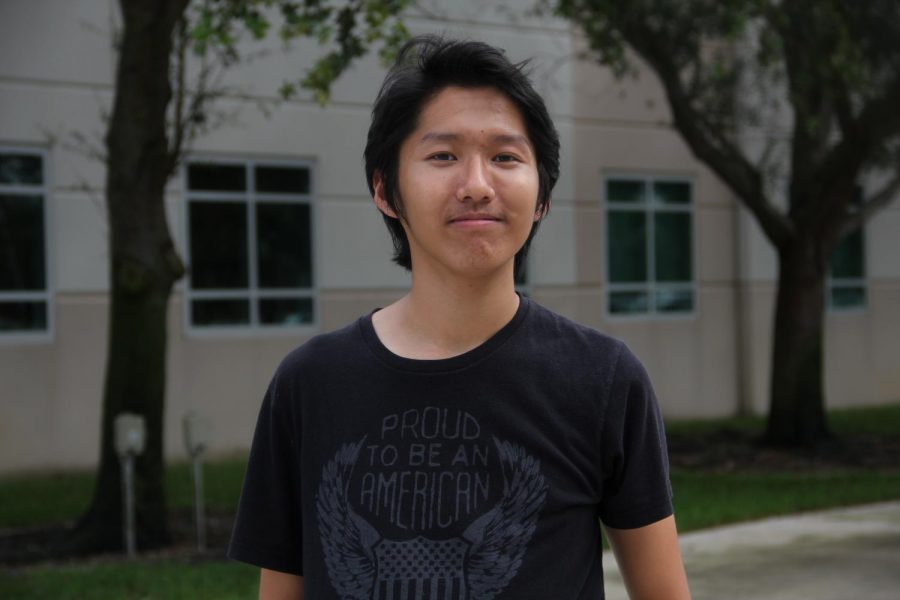
He came across articles from when Hurricane Katrina hit that described dangerous and violent conditions inside shelters, which he said only further worried him.
Preparing for the worst, John stuffed his suitcase mostly with water and food.
Across the campus at Innovation Village Apartments, 27-year-old Alvaro Valarezo had just opened the same email.
Alvaro is a senior majoring in business management and also an international transfer student from Ecuador.
“My parents, my brothers, everybody is in Ecuador,” Alvaro said. “I don’t have any family here so I didn’t have the option to go to another state or drive somewhere.”
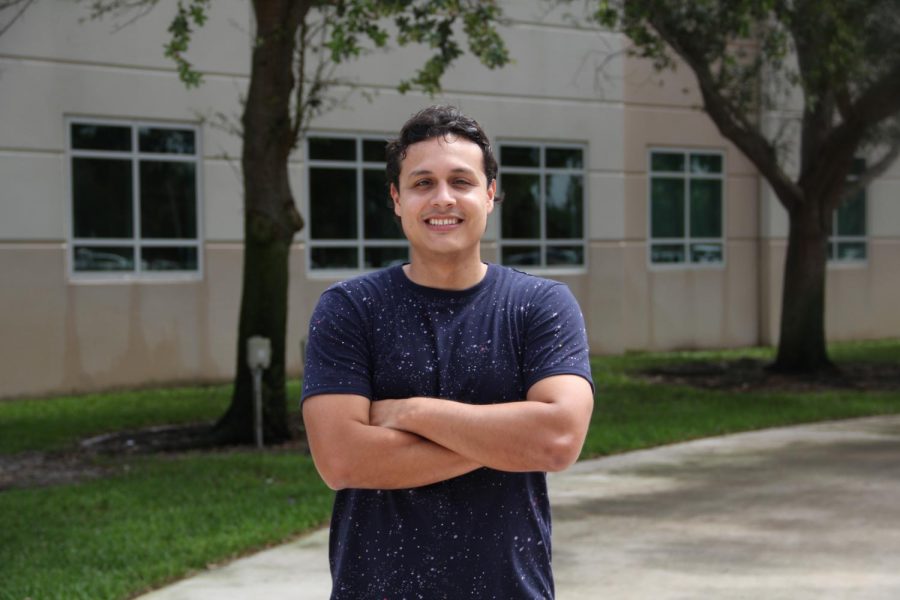
Most students Alvaro knew had stocked up and were prepared to stay in the dorms while the storm hit.
“We all got supplies, we bought food,” he said. “And we were prepared to stay in the building for like a week without power.”
John originally planned to do the same, despite the fact that all of his suitemates left the Boca campus dorms earlier that week after seeing Irma’s original projected path heading for the east coast of Florida.
While his mom lives in a Miami apartment, he decided to hunker down and ride out the storm in Glades Park Towers.
His suitemate Aldo had left him plenty of food and reassurance from his RA helped put his initial worries at ease.
“Before my RA Robert left, he said he had no doubt that all the buildings on FAU campus would survive,” John said.
But, the RA told him there was still a chance FAU students would be evacuated.
After Alvaro read the email, he did what John and on-campus residents did the night before the evacuation: started packing supplies to take with him to the shelter.
Rivka Averbukh, 21, is a senior studying nursing. She lives in the Business Professional Women’s Scholarship House that sits just east of the University Village Apartments and houses 17 women at a time.
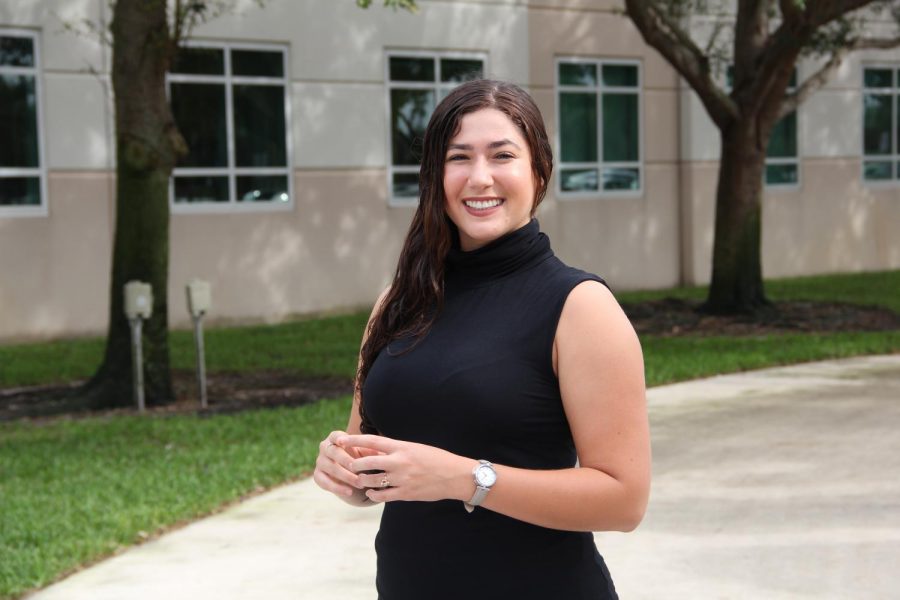
Originally from Israel, her immediate family now lives in Jupiter, Florida. She has lived on campus since the beginning of her freshman year and hadn’t experienced an evacuation before.
When she got the email, she quickly prioritized her most important supplies.
“They told us to bring food, water, blankets, medication, everything,” she said.
By 9 a.m. Friday, the buses were waiting to take students to safety.
At the shelter
About 80 students were shuttled from their dorms to nearby Boca Raton Community High School. John, Alvaro, and Rivka were among them.
Students stayed in the high school gym, spread out across the hardwood basketball court. Around 1,700 people total took shelter at the high school, with some in the gym and some in the auditorium and different parts of the school.
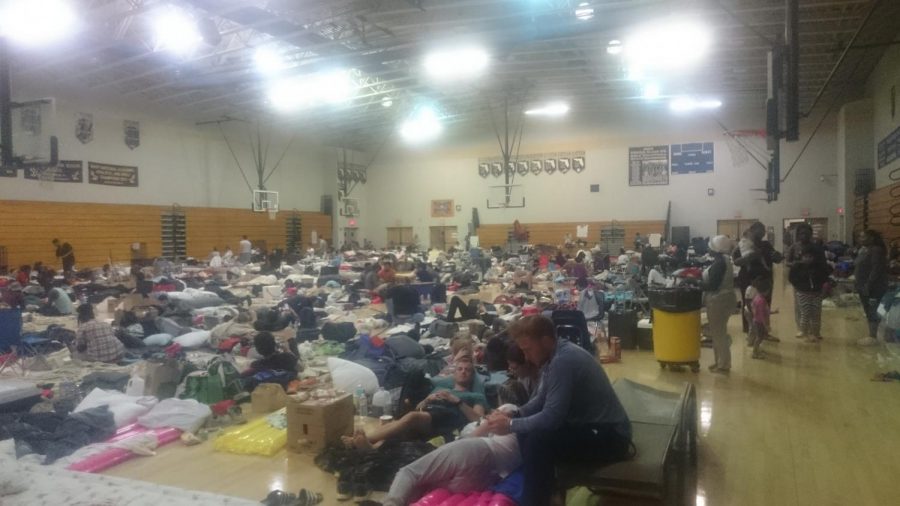
Upon arrival, John didn’t know what to expect.
“During the first couple hours, I was really on high alert,” he said.
Whenever he needed to use the bathroom, he asked somebody from FAU nearby to keep an eye on his stuff.
At first, he regretted not traveling home to Miami. But it wasn’t long before he started to see some upsides.
“Eventually you came to realize that most people there are nice,” John said.
For meals, evacuees were served cafeteria food from the high school’s kitchen. Evacuees filled the entire cafeteria while waiting to be fed.
“It was like a throwback to third grade because the menu at the cafeteria hadn’t changed a bit,” John said. “The same Mr. J juice pouches, the same mini corndogs.”
When it was time to sleep, John realized he had made a mistake. He packed way too much water and food and no blankets or bedding.
He put on his hoodie and tried sleeping on his suitcase. Other evacuees took notice and offered a helping hand.
“There were people who weren’t from FAU who saw me sleeping like that and they actually gave me blankets, pillows, and even a chair for instance so I didn’t have to sleep on the floor,” John said. “They helped me out, I’ll never forget them.”
The freshman said that he was happy for the chance to interact with people he would never have met otherwise.
“The people at the Boca shelter were like birds of a feather. We helped each other, so that was very different from my expectations in the very beginning,” John said. “When I got there it was a lot more reminiscent of home [Miami] than I ever anticipated because when you are there, you actually hear a lot of Spanish spoken, you see a lot of Haitian immigrants, you see Chinese immigrants. A lot of diversity compared to the overall demographics of Boca Raton.”
John ran into Rivka at the shelter, where they became friends. The senior nursing major said she settled into shelter life with ease.
“Honestly, it was like a sleepaway camp for me,” Rivka said. “I was surrounded by awesome people of all ages, background, color.”
While staying at the high school, she took the opportunity to volunteer as a nurse.
“It was a great experience,” she said. “I got to observe as a scientist, but also be a part of the community.”
“The best part was meeting people from Nigeria, Kenya, India, Germany, Israel, Palestine, Syria, all in one place, and you’re hearing all these different languages,” Rivka said. “There was a baby that was one week old. There were mothers about to burst. There were musicians, teachers, wealthy people. It was a big spectrum. It was a privilege to be a part of it.”
She said that overall, FAU handled the evacuation well.
“I could not be more thankful and surprised at how FAU handled all of us and organized everything and how faculty members sacrificed their time for us,” she said. “They have their own families to worry about but no, they wanted to take care of us and make sure all of us were in one place.”
Like Rivka, Alvaro also settled into his surroundings. He found that helping out around the shelter made his stay go faster.
“Some of us got the option to volunteer in the shelter,” Alvaro said. “Helping the elderly, register new people, keeping watch of everything. Our shifts were from 11 p.m. until 7 in the morning.”
Alvaro was able to keep in touch with Larry Faerman, the associate vice president and dean of students, which eased his mind while at the shelter. While checking on students, Faerman distributed food, water, and board games.
“He was always there with us,” Alvaro said. “He gave us his personal phone number so if any of us had any questions we could call him, and we did a few times. This was really helpful because we felt even though they took us to the shelter they didn’t completely abandon us and they were actually there for us.”
The business management major said the evacuation had its ups and downs.
“It was a good and bad experience. Good because at the shelter I made new friends and met new people that keep in touch,” Alvaro said. “It was bad because as a student from Ecuador, we never had hurricanes or anything like that, so it was a pretty new experience for me.”
Looking back, Alvaro said that while he would’ve preferred to stay in the dorms, he understands FAU’s decision.
“I was a little nervous but it was good to be amongst friends. As a student I didn’t like evacuating personally, because this building [IVA] is safe, and I could have survived with my food and water. But from the university’s point of view I understand why they [evacuated] because they are liable for a lot things. I don’t have anything against the university for that.”
Back to campus
When students were taken back to campus Wednesday, Sept. 13, they were driven directly to the Campus Rec Center for a few hours while the campus was surveyed for safety reasons. Cleanup crews worked to restore the campus to its former self for the rest of the week.
“It was really cool to see everyone working together to get all the debris off the streets,” Rivka said. “Not just FAU workers, but police officers too. They all got together to help the community back the way it was.”
The university had strict rules in place when residents first got back.
Students couldn’t walk or drive around campus and they had to wait a few days to grab their cars from the parking garages. The cafeteria was open for a short amount of time each day and students were shuttled from their dorm buildings directly to the dining hall.
Campus became fully operational the following Monday, Sept. 18.
Thomas Chiles is the features editor of the University Press. For information regarding this or other stories, email tchiles2013@fau.edu or tweet him @thomas_iv.
Thomas is a senior multimedia journalism major. He started at the Owl Radio news show before joining the UP as a contributing writer. You will most likely...


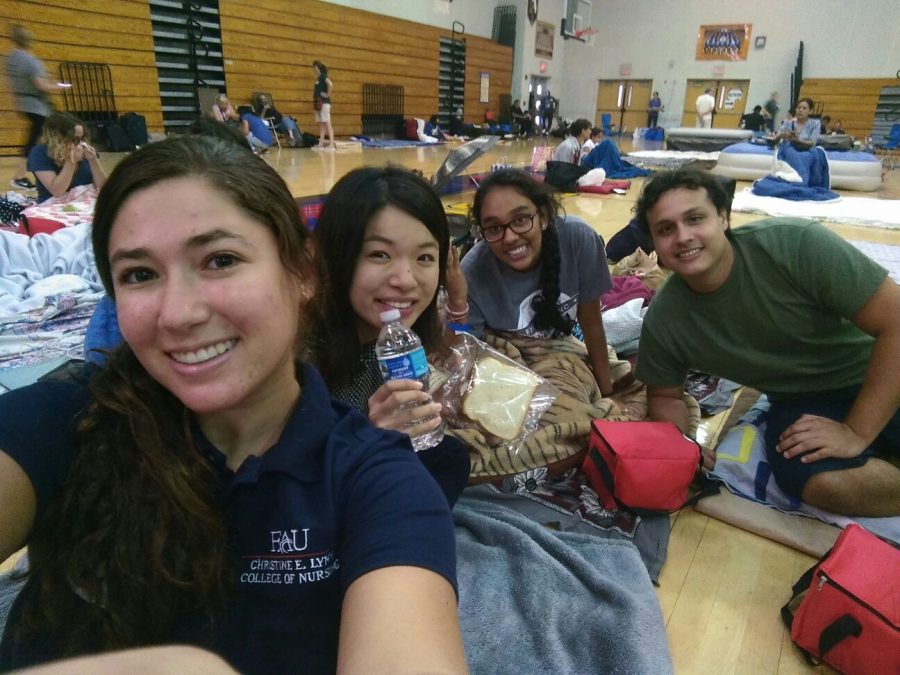

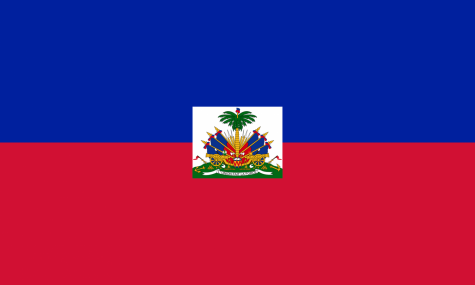

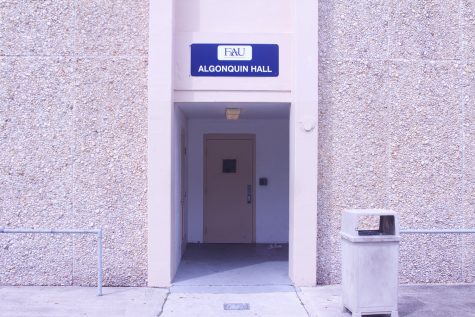






Dr. Rhonda Goodman • Oct 20, 2017 at 1:54 pm
It might be mentioned that two FAU professors, Dr. Rhonda Goodman and Dr. Beth King, volunteered to manage the shelter as shelter nurses and worked day and night to care for our shelter guests. Also, four nursing students from the College of Nursing, Rivkah Averbukh, Queen Aisha Abdul Akbar, Henry June, and Ashley Johnson, as well as our Japanese exchange student, Marina Terada, volunteered to work with their professors to learn shelter management and nursing care. Dr. Goodman has been the shelter nurse at Boca High since 2003. I have requested that Student Affairs purchase cots, blankets, and pillows for students for the next hurricane.